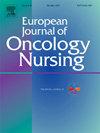End-of-life care preferences among cancer patients: A cross-sectional study in Vietnam
IF 2.7
3区 医学
Q1 NURSING
引用次数: 0
Abstract
Purpose
Honoring the end-of-life care preferences of cancer patients is indispensable for improving both the quality of life of patients and the quality of care they receive. This study aimed to explore end-of-life care preferences among cancer patients and related factors.
Methods
The cross-sectional study was conducted in a primary oncology hospital. G∗power was used to calculate the sample size. Convenience and proportional sampling methods were applied to collect data. Data collection was conducted from December 2023 to May 2024. Three instruments were used to investigate: 1) general and health information, 2) experiences and attitudes with end-of-life care for relatives, and 3) end-of-life care preferences. Data were analyzed using by the Fisher exact test.
Results
There were 280 participants in the study. The most important preferences of cancer patients were receiving the full truth regarding their illness, relieving distressing symptoms, having loved ones around when needed, being treated both physically and psychologically, not being a physical or psychological burden to family, and feeling meaningful life. The lowest percentage of agreement was for using active euthanasia. The findings showed difference in end-of-life care preferences between satisfaction with life, the experience of witnessing the relatives passing away at home, and attitude toward being remembered after death (p-values of 0.03, 0.02, and 0.04, respectively).
Conclusion
It is vital for medical staff to understand end-of-life care preferences in order to provide appropriate support for cancer patients, thereby optimizing their quality of life in the final stage and improving the quality of care.
癌症患者的临终关怀偏好:越南的横断面研究。
目的:尊重癌症患者的临终关怀偏好对于提高患者的生活质量和接受的护理质量都是必不可少的。本研究旨在探讨癌症患者的临终关怀偏好及相关因素。方法:在某基层肿瘤医院进行横断面研究。用G *幂来计算样本量。采用方便抽样法和比例抽样法进行数据采集。数据收集时间为2023年12月至2024年5月。使用三种工具进行调查:1)一般和健康信息,2)亲属临终关怀的经历和态度,以及3)临终关怀偏好。采用Fisher精确检验对数据进行分析。结果:共纳入研究对象280人。癌症患者最重要的选择是接受关于他们疾病的全部真相,缓解痛苦的症状,在需要的时候有亲人在身边,得到身体和心理上的治疗,不成为家庭的身体或心理负担,感受有意义的生活。赞成使用主动安乐死的比例最低。研究结果显示,对生活的满意度、目睹亲人在家中离世的经历和对死后被记住的态度在临终关怀偏好上存在差异(p值分别为0.03、0.02和0.04)。结论:了解癌症患者的临终关怀偏好,为癌症患者提供适当的支持,从而优化其临终生活质量,提高护理质量,对医护人员至关重要。
本文章由计算机程序翻译,如有差异,请以英文原文为准。
求助全文
约1分钟内获得全文
求助全文
来源期刊
CiteScore
4.40
自引率
3.60%
发文量
109
审稿时长
57 days
期刊介绍:
The European Journal of Oncology Nursing is an international journal which publishes research of direct relevance to patient care, nurse education, management and policy development. EJON is proud to be the official journal of the European Oncology Nursing Society.
The journal publishes the following types of papers:
• Original research articles
• Review articles

 求助内容:
求助内容: 应助结果提醒方式:
应助结果提醒方式:


